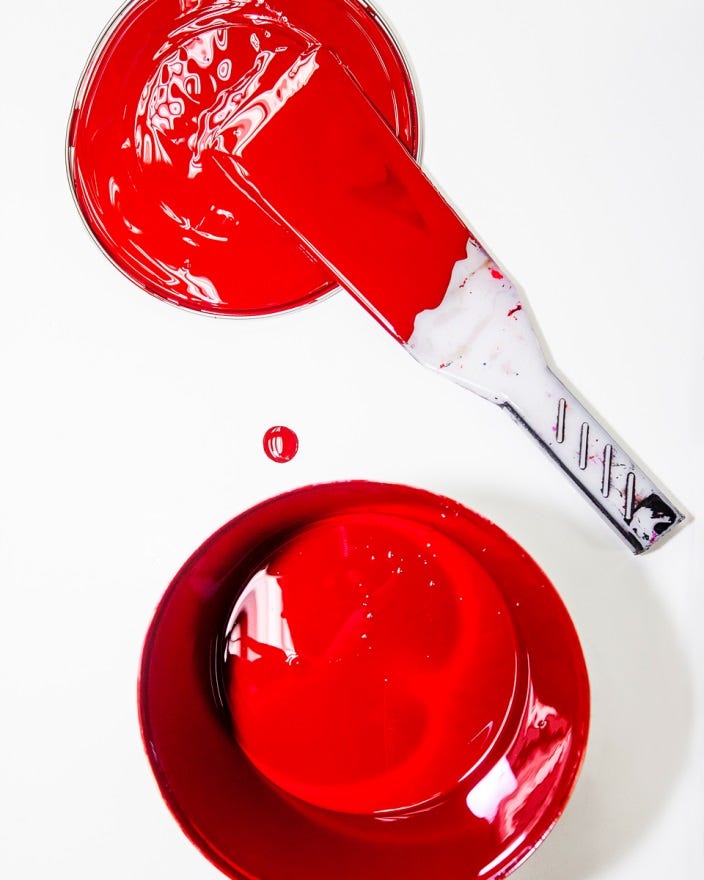
Different factors between spot color and normal in book printing

When the same ink is printed on paper with different absorbency under the same conditions, it will have different printing gloss. The structure of the paper determines that the surface of the paper has unevenness and pores formed by plant fibers. In order to obtain a good uniformity and smoothness on the paper surface, it is generally necessary to coat different thicknesses of paint on the surface of the paper. The nature and thickness of the coating determine the ink absorption capacity of the paper surface. Different absorption capacity will inevitably cause differences in the color of the printing ink layer. Compared with coated paper, the black ink layer will appear dull and dull, and the color ink layer will drift. The color blended by cyan ink and magenta ink is the most obvious. In the process of preparing spot color inks, the shearing force and pressure generated by the ink distributing instrument and the ink spreading instrument on the ink are smaller than those on the printing press.
In the case of the same color density, there is a color difference between the color card and the printed matter. This is because the addition of the lightening agent changes the distribution of the pigment in the ink, so that the absorption, refraction and reflection of light by the ink occur Change, resulting in chromatic aberration, this chromatic aberration is caused by the difference of the system.
In the printed product just printed, the ink is still in the wet state, and there is a density difference between the ink and the dry state. The phenomenon that the wet color density is greater than the dry color density is called the dry de-density phenomenon. This is because the ink layer just printed has a certain level of leveling, so the surface reflection is mainly mirror reflection, which looks bright in color and good gloss. When the ink layer is in a dry state, the surface reflection is dominated by diffuse reflection, and the color is naturally duller than when it is just printed.
A densitometer with a polarizer device can eliminate the light generated by the specular reflection on the surface of the ink layer. The measured wet color density is very close to the dry color density, so that the measured density value is not affected by the dry or wet ink layer. For coated paper, the measured density difference is 0.05~0.15, and the measured density difference of non-coated paper is 0.1~0.2. Different colors have different chromatic aberrations, with the smallest difference in yellow, the largest in black, and between blue and red. Therefore, when measuring with such a densitometer, the measured value should be appropriately higher than the density value of the standard color sample, so that it can play a control role.
Papers with different whiteness (or with a certain color) have different effects on the color of the printing ink layer. For the same whiteboard paper, the whiteness is different, the color difference of the printing ink layer is mainly reflected in the black ink composition in the spot color ink, especially for the color with a lightness above 70, the effect is particularly obvious, causing the spot color ink The ratio is very different. Therefore, in actual production, the paper with the same whiteness should be used for printing to reduce the impact of the whiteness of the paper on the printed color.
On color prints, when light is irradiated on the surface of the paper at an angle of incidence of 45°, about 4% of the light will be reflected off, which is the reflected light on the first layer. The rest of the incident light passes through the ink layer, is selectively absorbed by the ink, and then reflects through the ink layer, enters the human eye, and is perceived by the human eye. This is the color we observe. If the gloss and smoothness of the paper are high, the light reflected from the surface of the first layer is specular reflection, which is not easy to enter the human eye. The color observed at this time is basically the color reflected through the ink layer. If the surface of the paper is rough and the gloss is low, the reflected light from the first layer surface will be diffusely reflected. At this time, the color we see is the mixed color produced by the main color light and the reflected light from the first layer surface.
In addition, the stability of the ink used in the deployment of spot colors, the thickness of the ink layer, the accuracy of weighing the ink, the difference between the old and new ink supply areas of the printing machine, and the speed of the printing machine will all have different effects on the color difference.
Feel free to contact us to learn more about the China printing service. We are happy to guide you how to get the cheap book printing China.
Posté par : BookPrintingInChina
Ecrit par : BookPrintingChina
Source : https://www.bookprintingchina.com/Blog/different-factors-between-spot-color-and-normal-in-book-printing